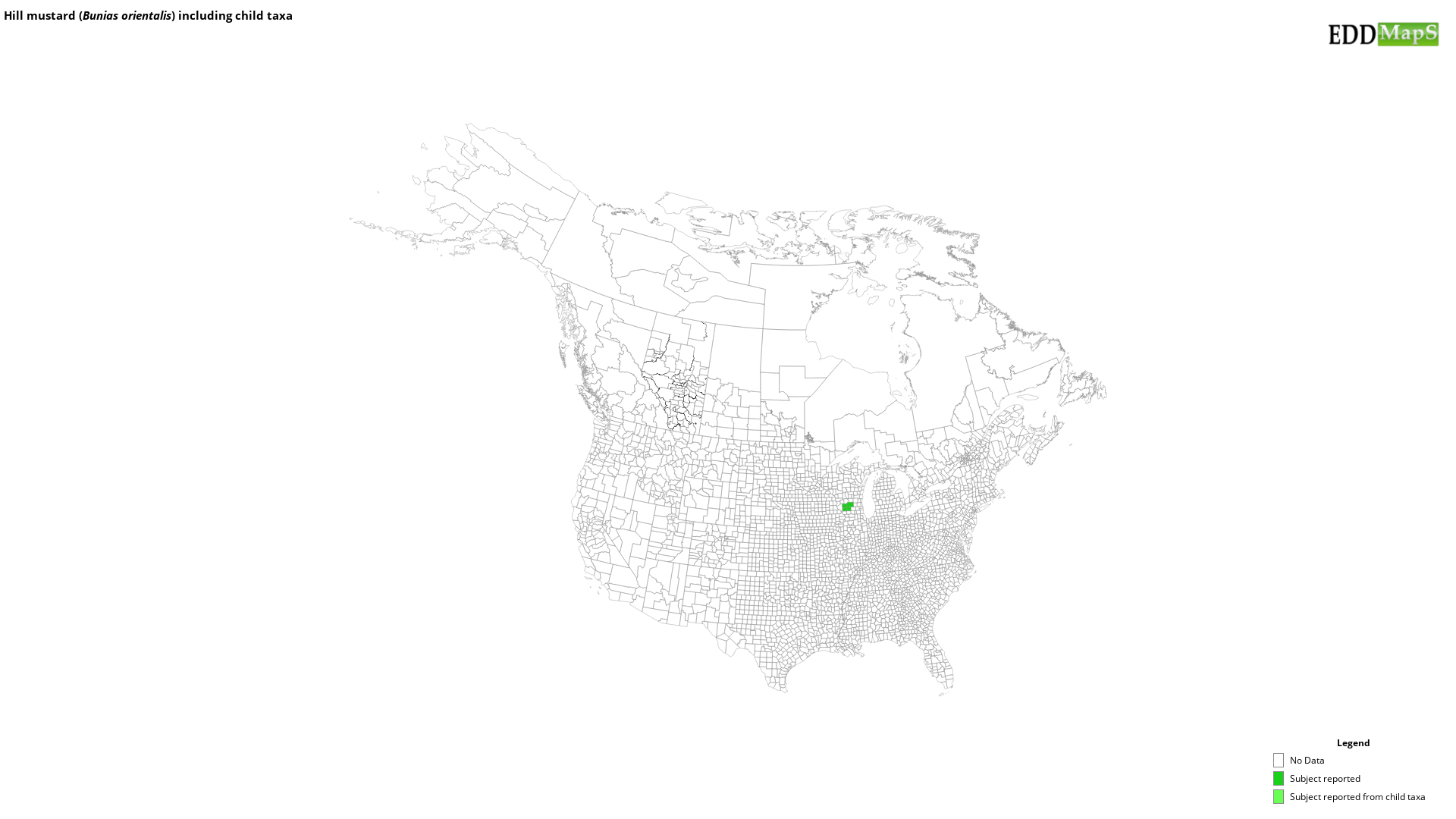Hill mustard
(Bunias orientalis)
This species is Introduced in the United States
Appearance
Bunias orientalis is a perennial or biennial plant with a height of 1.6-2.9 ft. (0.5-0.9 m).
Foliage
The lower leaves are with large threecornered edges or sharpedged. Lower leaves pinnate with 1 or 2 pairs of lateral leaflets and a large, clefted (pinnatifid) terminal leaflet, sometimes entire; the upper leaves are entire to pinnatifid and are smaller.
Flowers
The petals are 2 in. (48 mm) long, yellow, entire or truncate.
Fruit
The fruit (a silicula) is less than three times as long as broad and 0.2-0.4 in. (5-10 mm) long, asymmetrically ovoid and covered with small, irregular protuberances.
Ecological Threat
Bunias orientalis it has become a weed of cultivation, occurring on grass fields, roadside verges, and ruderal sites as well as in gardens. From these sites it can invade dry grasslands, especially neglected dry meadows. Solitary specimens to dense stands of Bunias orientalis may also be found along railways, on fallow lands and in floodplain meadows.
Selected Images
Maps
EDDMapS Distribution - This map is incomplete and is based only on current site and county level reports made by experts, herbaria, and literature. For more information, visit www.eddmaps.org
State Lists - This map identifies those states that have this species on their invasive species list or law.
Taxonomic Rank
| Domain: Eukarya |
| Kingdom: Plantae |
| Phylum: Magnoliophyta |
| Class: Magnoliopsida |
| Superorder: Rosanae |
| Order: Brassicales |
| Family: Brassicaceae |
| Genus: Bunias |
| Bunias orientalis |
References
Common Name Reference: USDA, NRCS. 2010. The PLANTS Database. National Plant Data Center, Baton Rouge, LA, USA.
Scientific Name Reference: USDA, NRCS. 2010. The PLANTS Database. National Plant Data Center, Baton Rouge, LA, USA.


